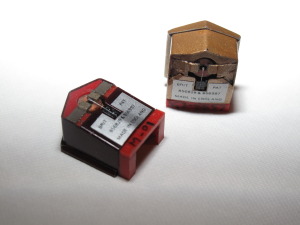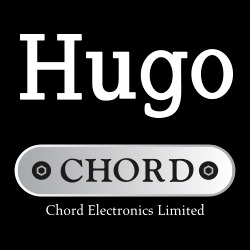I had honestly intended to kickoff the actual buying exercises with items decidedly down-market in price. Alas, the post and transatlantic communication are against me, so I’m going to start you on the road to second-hand bliss with a suggestion for those whose goals are aimed at (or near) the state of the art.
One genuinely hot topic lately has been the absurdity of high-end cartridge prices. Can any cartridge really be worth £200 or £500 or £1200?l suppose it’s like anything else. If you can afford it, why not? Is a Ferrari really worth six times as much as a VW Golf GT1? Is a bottle of Chateau Lafite worth a hundred cans of Cola Cola? If your taste buds and your bank manager say “Yes”, then so be it.
What’s caused such a rumpus in the cartridge stakes has been the appearance of a new breed of cheapo cartridges, like the £15 Grados that earn rave reviews in underground hi-fi journals, right alongside Koetsus and Kisekis. Is their sound difference better by a factor of thirty?
I don’t want to be labelled an elitist, but I dare say that no matter how awe-inspiring the new budget cartridges have become, those silly-priced lumps of wood or plastic or platinum-iridium still have an elusive “magic” that can only be acquired by handing over vast sums of money. But here’s where the cognoscenti start dividing up into warring factions.
Besides the hand-built Grado Signatures, every one of the Super Cartridges is a moving coil. Joy of joys. The folks at B&O are doing their best to prove that moving coils are not intrinsically superior to moving magnet types, and – should their findings ever become gospel – it will prove my point that moving coils are over-rated bits of con-artistry, existing only to enable manufacturers and dealers to sell extra hardware: the head-amp or transformer.
I hate head-amps. And transformers. Built-in to the preamp or added on by the user. Battery-powered or mains operated. Large or small, tranny or valve. I hate the damned things. And even if you find a high output MC. you‘re still going to spend a bundle on a preamp that will do it justice. (Go on. Plug a Koetsu straight into anything below the calibre of Audio Research. Now listen for the sound of Mr. Sugano’s hara-kiri blade…)
Moving magnet cartridges need no boosters, they track well, they’re generally quieter. And yet there are few, if any, accepted by The Cult. Moving coils must have some reason for their appeal, though I tend to think it’s simply the similarity between the generic term and a certain carnally-oriented device sharing its last syllable.
For years, Decca has been quietly producing the world’s greatest cartridge. No fanfares, no trips to foreign lands, no mythology about little old men hand-winding coils in the shadow of Mt. Fuji. The Decca London cartridges have been around longer than any single component in today’s market place, after the venerable Quad Electrostatic. [2014 update: Or Denon’s 103, the Ortofon SPU and the Klipschorn….]
They’re common as muck in the classifieds. They have an image that conjures up Heath Robinson, Meccano, and old men that still call turntables “gramophones” and suffer gout and remember the Great War. In pukka, it is ignored.
By the British, that is. In the wilds of Australia, the Brothers Garrott have been refining the design to a point where it begs comparison with the finest that the MC brigade can offer. They take old Deccas and turn them into sonic miracles. You can provide your own (this is where “Whole Earth Hi-Fi” comes in) or you can buy fresh ones ready-modified. And even if you go the expensive route, by purchasing one fresh, it will still cost less than the price of the top MCs, less than a decent arm, less than a decent turntable, and less than a year‘s worth of cigarettes at 20 a day.
The modification costs about £ 125. Sharp intake of breath from impoverished readers. Sharper intake of breath when I reveal that the mod plus the purchase of a cartridge from the suppliers bumps it up to over £200. (The reason I’m not quoting exact prices to the penny is the floating nature of the pound.) A careful glance at the listings at the back of this magazine will show you that this is a bargain compared with the big MCs, head-amp notwithstanding.
BUT … if you scan the classifieds, you will find used Deccas for as little as £10. And here’s one purchase where condition of stylus means absolutely nothing, for the Brothers Garrott will do unto your Decca what Professor Higgins did unto Ms. Doolittle. £135 for the best cartridge in the universe? Has Mr. Kessler lost his remaining marbles?
The Decca cartridges are probably the most controversial items (after the Linn Sondek) ever manufactured for hi-fi use. They are either loved or loathed. They are the subjects of more falsehoods and misunderstandings than any component could possibly deserve. Why? Because they’re different.
CARTRIDGE COLOUR
The Decca London Cartridges came in four varieties, differing in stylus profile: Blue, Grey, Maroon, and Gold. They looked like no other cartridges, being square tin constructs with no visible cantilever, a decidedly odd mounting arrangement, and only three connecting pins instead of the usual four. They seemed to offend every tedious, boring, unimaginative customer incapable of accepting an alternate route to cartridge design.
Worst of all, Deccas quality was so lax as to render no two alike. If you got a good one, it was bliss. If it turned out to be a bad one. it was sheer misery. Because of this, Decca cartridges entered hi-fi lore bearing the following stigmata:
1) All Deccas hum: This is a load of horsefeathers. They only hum if set up by morons.
2) All Deccas mistrack: Of course they do, just like every other cartridge ever made, bar – possibly – the Shure V15 Type V. If your idea of a good cartridge is one that can negotiate the Telarc 1812, you have my condolences. But not my respect.
3) Deccas chew up records: This conclusion appears to those that believe No. 2, I have yet to meet any Decca owners that feel the need to replace their record collections.
4) Deccas are impossible to setup: Lower your head another five degrees and you’ll see the stylus plain as day.
Even if you believe one of the lies, the Garrott brothers can disarm you. They start by rebuilding the Deccas up to the standard that Decca should have used. They make sure that the tin can of a body doesn’t hum or resonate. They guarantee the channel balance. Then they put in the Weinz Parabolic Stylus.
The results are divine. The sound is heavenly. The effect is shattering. You hear tight, controlled bass. The imaging is solid, as real a spatial effect as one could ever hope to find. The top end is sweet and detailed and clean and totally non-fatiguing. You find that stereo really is three-dimensional. You wonder how you could have ever lived with anything else.
But buying a Decca/Garrott (or Garrott Decca, or Decca GPD, or Prestige DT1, or Weinz Parabolic Decca – they can‘t even decide what to call it) requires a leap of faith. You must be brave. It takes a courageous man, in this day of dictatorial magazine reviewers, to buy something not appointed by The Cult. It takes a courageous man to buy a non-MC cartridge if he’s spending over £50. But it takes a fool to ignore this cartridge.
There are many ways of acquiring one, the “Whole Earth” method being to buy a second-hand Decca and send it of to the Parabolic Stylus Co. Which colour is best? That depends on who’s doing the talking. Some say Blue, some say Gold. Others say Grey, still others Maroon. If you don’t want to look for an old Decca, the Parabolic Stylus Co. or Tim Francis (who calls his ‘Prestige’, as apt a name as any) will supply complete packages.
What do you do with it when you get it? You set it up EXACTLY as the instructions dictate. Which arm do you use? An Audio Technica AT1100, a Fidelity Research FR64fx, or a Zeta – again, depending on whom you ask. Or an Ittok or an Infinity Black Widow or an ADC ALT1 or a flippin’ Biro if you ask me: I’ve never heard a Decca Garrott sound bad no matter what arm it’s used in or on which turntable the arm is mounted.
The cartridge is not inexpensive, which bothers me because there are hundreds of thousands of people out there that would really love it. But then what would cause the price on Whole Earth versions to skyrocket, because the second hand value of Deccas would inflate due to the laws of supply and demand. Buy yours while the ink is still wet on this issue.
Then sit back and get your first taste of heaven.
(Hi-Fi For Pleasure, May 1983)























